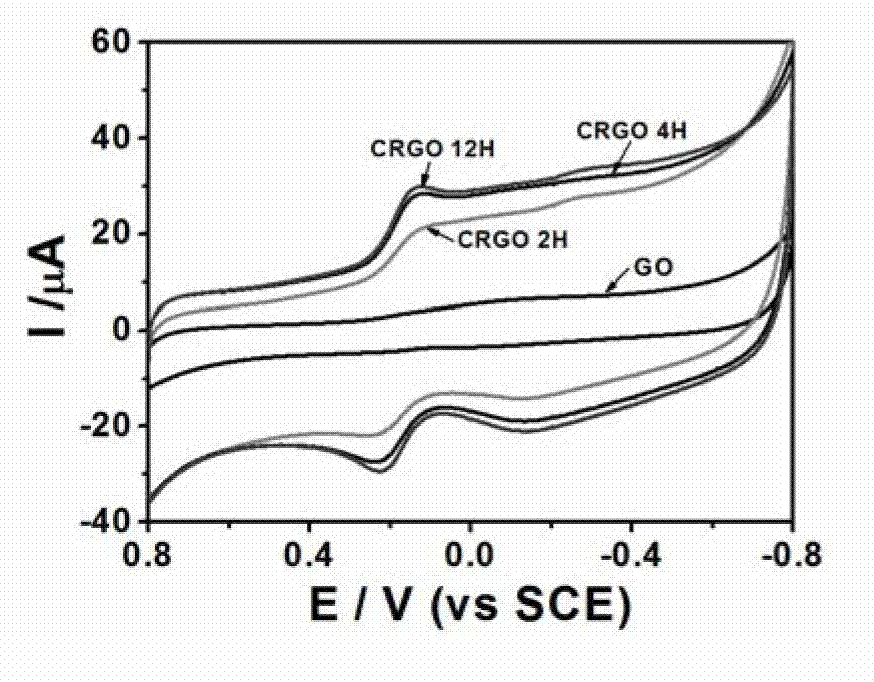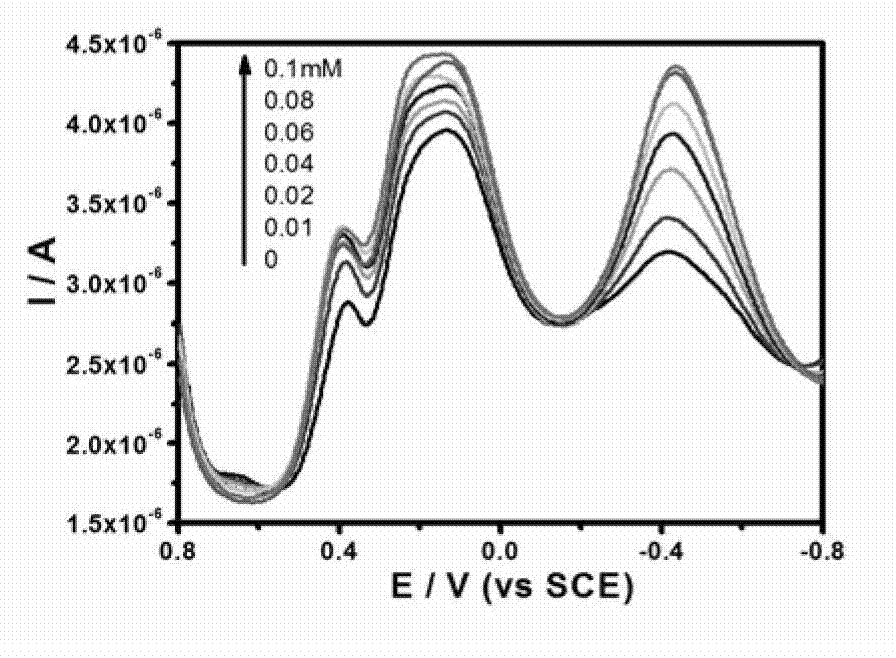Electrochemical biosensor for detecting oxalic acid concentration, and preparation and application thereof
A biosensor and electrochemical technology, which is applied in the field of preparation of electrochemical biosensors, can solve problems such as electrochemical biosensors that are not prepared for oxalic acid detection, and achieve the effect of wide application prospects.
- Summary
- Abstract
- Description
- Claims
- Application Information
AI Technical Summary
Problems solved by technology
Method used
Image
Examples
Embodiment 1
[0021] Partial reduction oxidation Graphene. Add 20 mg of ascorbic acid to 10 mL of 1 mg / mL graphene oxide aqueous solution, and place at room temperature for 2 h, 4 h, and 12 h, respectively. Then, it was filtered and washed through a microporous membrane, then dispersed in ultrapure water, and then dialyzed to obtain PCRGO with a concentration of 1 mg / mL. The samples obtained by reduction at different times were named CRGO-2, CRGO4, and CRGO-12, respectively.
[0022] Add 0.1mL, 1mg / mL CRGO-12 to 0.9ml 20mM sodium succinate buffer solution (pH3.5) containing 0.1-0.5mg oxalate oxidase and mix, and rotate and mix at 4°C for 2h. The mixture was centrifuged at 15000rpm for 10min, and thoroughly washed with buffer three times to remove free and weakly adsorbed OxOx molecules, and the precipitate was dispersed in 0.2ml of 20mM sodium succinate buffer solution (pH3.5) to form CRGO-12 A dispersion with a concentration of 0.5 mg / mL.
[0023] A glassy carbon electrode (3 mm in dia...
PUM
 Login to View More
Login to View More Abstract
Description
Claims
Application Information
 Login to View More
Login to View More - R&D
- Intellectual Property
- Life Sciences
- Materials
- Tech Scout
- Unparalleled Data Quality
- Higher Quality Content
- 60% Fewer Hallucinations
Browse by: Latest US Patents, China's latest patents, Technical Efficacy Thesaurus, Application Domain, Technology Topic, Popular Technical Reports.
© 2025 PatSnap. All rights reserved.Legal|Privacy policy|Modern Slavery Act Transparency Statement|Sitemap|About US| Contact US: help@patsnap.com



